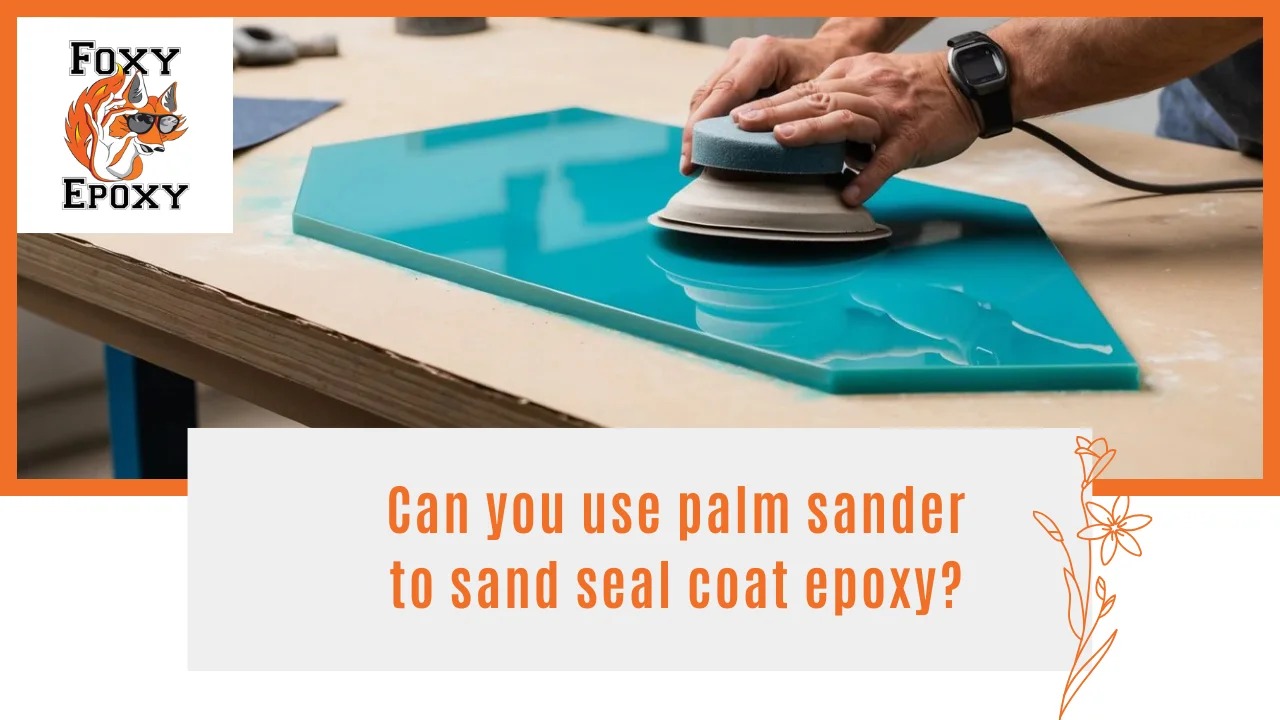
The target when using epoxy resin is a smooth, polished finish. Refinishing involves sanding and applies to floors, countertops, and custom tables.
Many DIYers and professionals ask: can you use palm sander to sand seal coat epoxy? Here are important tips and tricks for great results without risking your project.
It is also important to know the grit of the sand seal coat epoxy before leaping into sanding itself. Epoxy resin is strong and hard. It needs to be rough enough for proper sanding. Most epoxy floors begin with a rough grit.
Common choices are 120 or 150 grit sandpaper, used with epoxy resin. This will aid in eliminating flaws or humps in the seal coat. Then you slowly start sanding with finer grits (220 or 320) to achieve a smooth finish that you are ready to polish.
Applying the appropriate grit prevents the intrusion of unnecessary scratches. It prepares the surface to be polished or further coated. The grit of sandpaper you pick for epoxy resin depends on two factors: the stage of your project and the epoxy surface's condition.
One machine that reads very well with respect to what has been mentioned is a palm sander. Its small size and easy handling make it great for sanding without oversanding.
A palm sander is great for sanding epoxy floors or seal coats. It helps you work quickly and apply evenly. This tool is also useful in tight or hard-to-reach spots.
And when you ask, is it possible to sand epoxy resin using a palm sander? the answer is YES, it is. Choose the right sandpaper for your palm sander. Move it evenly to avoid gouging or digging too deep.
The next step after sanding your epoxy surface is polishing. How to polish epoxy after sanding is a question for many.
This is done by buffing the surface to put the shine back and buff off the fine scratches from sanding. You can get great results with an orbital buffer or a palm sander with a polishing pad.
Microfiber pads and resin-based polishing compounds are great choices for epoxy resin polishing. The aim is to polish the area until shiny, but not much heat should be generated, which might harm the epoxy.
You may find that directly after sanding, the surface feels rough, and this is quite normal. Sanding epoxy can leave the surface a bit rough or matte. This happens because sandpaper scratches the resin to smooth out flaws. Grit plays a role in preparing the epoxy before polishing or recoating.
If your epoxy has defects like burns or deep scratches, you might need to sand more aggressively. Start by using a lightly abrasive grit, like 80 or 100 grit, to remove burnt epoxy from a table. Then, gradually increase the grit.
Epoxy surfaces sometimes require re-sanding for repairs or to apply a new coat. It includes the work of progressively sanding back off the top layer and going over it again with polish.
You can do this more accurately and easily with a palm sander. It works better, especially with proper sanding and buffing methods for epoxy resin.
When working on the underside of an epoxy desktop, you might wonder what to use for filling it in. Smooth the underside and seal it with finer grit sandpaper. Then, apply a protective finish.
Epoxy that has been cured via sanding produces dust and particles. These may irritate or injure you when you breathe them into your lungs or when they come in contact with your skin.
When sanding epoxy resin, wear long sleeves, use gloves, and wear a mask. This guards your skin and lungs. You should always work at a well-ventilated place.
An epoxy sander can mean different types of sanding tools. These tools work on resin surfaces. They include palm sanders, orbital sanders, and hand sanding blocks.
Using quality sandpaper is important for the best results. Choose durable sandpaper for epoxy. Use election sandpapers for sanding hard surfaces. This helps make sanding easier and more efficient.
Normally, you want to start with 120-150 grit and then finish up with 220-320 grit. Ultra-fine grits and polishing compounds enter the scene in the polishing activity.
Buffing is what makes your epoxy surface go dull and dazzling. Choose the right pads and compounds. This is the second key part of good epoxy buffing techniques. It also involves following steps to create a shiny, reflective finish.
Yes, a palm sander is a handy tool for sanding epoxy seal coats. With the right grit sandpaper and technique, it works efficiently. It offers controlled sanding and speeds up finishing work without any geometric risks.
Foxy Epoxy Orlando helps people get the epoxy finish they want. We have an elite group of professionals to take a project through sanding to polishing.
Are you simply refinishing your epoxy floor, or are you making a custom epoxy desktop? Let us show you the way to go, lunchpail has the knowledge and tools to achieve this.
Contact us today for details on epoxy sanding, polishing, and finishing services. We can help make your surfaces look great for years to come.
Q: Is it possible to sand epoxy resin by means of a palm sander?
A: Yes, a palm sander is fine to sand epoxy coats of seal with the proper grit of sandpaper to use.
Q: Which grit sandpaper should I use on epoxy resin?
A: I would use 120-150 grit as an initial grit and 220-320 grit as a finishing grit.
Q: How do you sandpaper epoxy?
A: Use a polishing pad to roughen the finished surface. You can use a buffer or palm sander with polishing compound for a glossy, smooth finish.
Q: Is any protective clothing required to sand epoxy?
A: Yes, it is better to wear such clothes as long sleeves, gloves, and dust mask otherwise it can irritate.
Give us a call or fill in our FREE quote form to find the best floor coatings for your specific project.